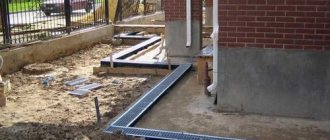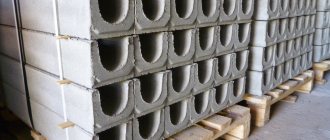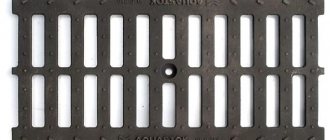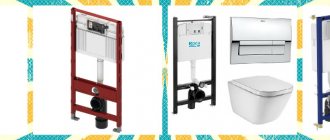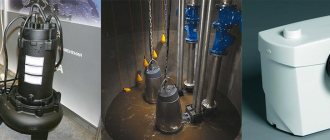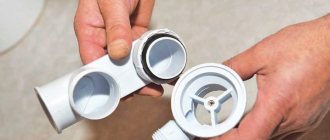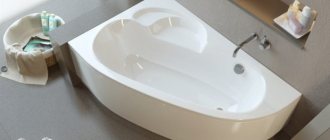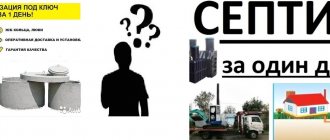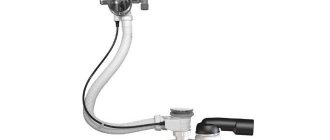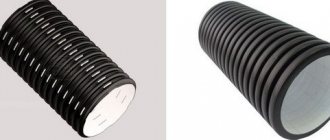How does the drainage system work?
A drainage system is a system for collecting and draining rain, melt and groundwater to a specially designated place. Drainage systems are divided into the following types:
- surface - those through which rain and melt water is collected and later transported to the storm sewer;
- deep - designed for collecting and draining groundwater.
Drainage trays are part of the surface drainage system. In addition to them, storm water inlets and sand traps are used. As a rule, a drain drains water into a storm drain, a regular sewer system or a pond, but some enterprising summer residents direct the collected water to the beds. This is a practical solution, but it will be justified if there are heavy rainfalls - this is very rare in the region, otherwise a strong flow of water can wash out the soil and harm the plants.
Trays are made from different materials. Typically plastic, concrete and metal are used. It is advisable that the top of the tray be covered with a grill, which protects the system from large debris and, consequently, from clogging. The tray can be U- or U-shaped. When choosing a drainage tray, first of all, attention is paid to the material of its manufacture, therefore we will start with this characteristic.
Sewer containers
When installing a local sewer system, there are several options for disposing of wastewater. But usually, the owners of a private house give preference to storage containers.
A storage tank is a sealed container to which a sewer pipe leaving the living space is connected. Definitely, the price of a sewage tank will depend on the size of the tank; this option is one of the cheapest.
Today, customers are offered to buy sewage containers made from different materials. But regardless of what material was chosen for the manufacture of the container, it is necessary to regularly clean the tank from contaminated liquids.
Plastic drainage trays
Plastic trays are made from polypropylene and low-density polyethylene . the greatest popularity in private construction . Products differ in width (7-30 cm). To increase strength properties, stiffeners can be used. Such reinforced gutters are perfect for arranging areas near garages, parking lots and car service stations.
pros:
- price. Plastic trays are cheaper than all analogues;
- light weight, which ensures ease of transportation and installation;
- resistance to silting, since the surface of the tray is absolutely smooth;
- resistance to low and high temperatures, from -40 to +900C;
- relatively high resistance to aggressive substances that may enter the drain
Minuses:
- low strength, low resistance to mechanical loads, which imposes restrictions on the area of use.
Such products are perfect for arranging the territory of a country house, but if we are talking about a road or an industrial area, then it is better to take more reliable material. An alternative solution is to reinforce the plastic tray with a zinc plate. Otherwise, during a strong flood, such a gutter may be deformed or even moved out of place.
The plastic tray must be protected with a grate , otherwise the storm drain may become clogged with debris flowing from the area.
The grate should be light, but at the same time durable. Products made of galvanized or stainless steel are ideal. The strength of the grating is chosen depending on where the drain is installed, since the loads will be different near a country house and a car service center.
Trays for storm drainage: selection criteria
The modern construction market offers a large number of varieties of gutters for installing a system for draining water from the territory.
Types of drainage trays
When purchasing, you need to pay attention not only to the size of the drainage trays, but also to the following characteristics:
In addition, it is worth paying attention to the main decorative element of the system – the grille. It should not only look attractive, but also effectively perform its main function, that is, protect the system from debris getting into it. To do this, the grate must have a fine-mesh structure.
When choosing gratings for drainage trays, you need to focus on the permissible load class that they can withstand
Metal drainage tray
The strongest products are made from metal . Despite this undeniable advantage, such gutters are currently used extremely rarely. The main reason is susceptibility to corrosion. Of course, manufacturers apply a protective layer, but it does not always prevent rust, since the product will be in constant contact with water. In addition, metal is expensive, and everything about such gutters will be decent, which will significantly complicate independent installation.
Metal trays can be of the following types:
- cast iron They are used extremely rarely due to their high weight. But they have practically no analogues in strength. Such products are not used in private construction, but they can be seen at military bases and other military facilities;
- steel trays (stainless and galvanized) are slightly inferior in strength to cast iron ones, but when choosing the right size and proper installation, such gutters serve no worse. On the other hand, they are much lighter than cast iron, which means they are easier to install. The products are used for arranging park areas and roads where passenger cars travel.
When choosing, it is important to pay attention to the thickness of the metal, as well as the thickness of the protective layer, on which strength and durability directly depend.
Concrete and reinforced concrete trays
Concrete trays are widely used in almost all areas of construction, incl. and in private. The products are produced in different sizes and fit well with paving slabs.
pros:
- high strength comparable to cast iron products;
- low price;
- durability;
- relatively simple installation, even despite the weight of the products;
- the possibility of use with an aggressive composition of wastewater, however, when purchasing it will be necessary to specify the brand of concrete used, since some of them can literally dissolve under the influence of certain substances.
Minuses:
- weight, which complicates transportation;
- sensitivity to shocks, therefore transportation is carried out with extreme caution;
- the need to use special cutting equipment.
The throughput capacity of concrete gutters is average, since the material has an imperfectly smooth surface, and dirt particles can gradually settle on it.
It offers a wide range of drainage trays. On sale are products made of concrete, composite concrete, polymer concrete, plastic and fiberglass, as well as point drainage and drainage for facades and terraces. The company's employees will help you choose the most suitable products.
Assortment of trays
Commonly used for wastewater disposal, these products use either casting technology (if made from cast iron or concrete) or thermoplastic extrusion (if made from plastic). As a result, manufacturers offer trays on the market that differ significantly from each other both in strength and in other performance characteristics. Therefore, when classifying trays, their division is most often based on the type of structural material from which they are made.
Polymer trays
In their production, engineering polymers are used, which is usually polypropylene, which has a mineral filling. The use of such composite materials gives the resulting product high performance qualities: they are difficult to scratch, and, in addition, they are inert to many chemicals and have great strength (some varieties can withstand loads reaching 60 t/m2). The operating temperature of polymer trays ranges from -50…+120 °C. With their help, you can organize drainage both near residential buildings and near railway tracks.
Typical polymer gutter modules usually have:
A) weight - 9...14 kg;
B) width - 14...50 cm;
B) length - 100 cm;
D) height - 6...79 cm;
D) conditional passage - 10 cm.
Concrete trays
They are produced using concrete, to which either steel wire, polymer threads, or fiberglass are added to reinforce it, using the vibration casting method. With this technology, a mold with a mass that has not yet hardened is installed on a special vibration stand. Concrete drainage trays are used in combination with cast iron slotted gratings.
Concrete trays have increased strength compared to conventional reinforced concrete products. Therefore, they are used not only for the implementation of surface drainage systems for residential buildings, but also for organizing drainage on highways or at industrial facilities.
Typical concrete trays have:
A) gutter length within 50...400 cm;
B) cross-sectional dimensions from 14×15 cm to 43×88 cm;
B) an opening with a nominal diameter equal to DN 100.
The characteristics of these concrete products must comply with industry standards and the manufacturer's specifications.
Cast iron trays
They (and their gratings) can be made from either ISO 185 cast iron, which has plate-type graphite grains, or EN1563 cast iron, which has spheroidal graphite grains. Since a material such as cast iron is susceptible to corrosion, finished trays (and in some cases, their gratings) can additionally be protected from rust using hot-dip galvanizing. But in most cases, these products are supplied to consumers without a protective zinc coating.
Since cast iron trays can withstand both transverse and longitudinal loads well, they are used for organizing drainage mainly in critical cases, for example, at airports or in parking lots for heavy vehicles, etc., in which it is economically justified.
Trays and grates made of cast iron have:
A) maximum length equal to 50 cm;
B) greatest width - 20 cm;
C) lattice thickness - at least 5 cm;
D) the dimensions of the passage opening with a nominal bore of DN100 or more.
Polymer concrete trays
Polymer concrete trays combine the advantages of plastic and concrete products, but they are rarely used, which is associated with a fairly high cost. Products are made from plastic, sand and additives.
pros:
- smooth inner surface;
- durability up to 30 years;
- relatively light weight (less than concrete), therefore transportation and installation are easier;
- sufficient strength and wear resistance.
Minuses:
- price;
- the need for special equipment for installation.
Composite drainage trays
Composite, or rather composite concrete, gutters are a more advanced version of concrete drainage trays. In addition to concrete, the composition contains composite additives that make it possible to obtain a material with unique characteristics.
pros:
- light weight and easy to transport;
- simple installation;
- high throughput;
- durability is higher than that of concrete analogues;
- possibility of mechanical cleaning;
- resistance to low temperatures;
- anti-vandal properties.
Minuses:
- price.
Characteristics of main dimensions
When choosing the type of storm drain, the following technological characteristics are taken into account.
For plastic:
- density, kg/m3;
- water absorption for 24 hours,%;
- melting temperature;
- brittleness temperature;
- flexural modulus of elasticity;
- Rockwell hardness.
For concrete:
- compressive strength class;
- bending tensile strength class;
- concrete grade for frost resistance;
- water absorption of concrete,%;
- concrete waterproof grade
The permissible shift in the heights of the walls of adjacent drainage trays of different sizes is also specified.
During manufacture, the product is subjected to the following types of tests:
- Checking the tray for permissible test loads (checking is carried out until cracks appear in the product).
- Allowable hardening time (for trays made from concrete containing various polymer additives).
- Testing for chemical and corrosion resistance.
These types of tests apply both to industrially produced trays and to products that are produced directly on construction sites.
Fiberglass drainage systems (fiberglass)
One of the most modern solutions that has an amazing set of advantages. The tray is made on the basis of polystyrene, which is reinforced with fiberglass. Unlike conventional plastic gutters, which are designed for light loads, fiberglass analogues can be used even on busy roads, near enterprises and warehouses.
pros:
- versatility. Trays can be used in almost all areas of construction, incl. and in private;
- minimal weight and ease of transportation;
- ease of installation;
- durability;
- smooth surface;
- resistance to temperature changes, freezing and defrosting;
- not very high price.
Minuses:
- It is still inferior in strength to concrete, therefore it cannot be used on sites where the loads will be maximum (military bases, airfields, etc.).
Permissible load
Depending on the permissible load on the tray, they are divided into the following groups:
- A15 - trays that are installed in places with low mechanical and storm loads. Suitable for the local area in a country house, for garden paths, sports grounds;
- B125 - more durable products, suitable for installation along roads along which passenger cars travel;
- C250 can withstand even heavier loads and can be used in a car service center and car wash;
- D 400 – trays that can withstand the load from a vehicle of any weight, therefore they are suitable for installation on any roads, as well as in industrial zones;
- E600 are used near industrial enterprises and warehouses;
- F 900 are the most powerful trays that are necessary for equipping airports and military facilities.
Plastic trays belong to group A15-C250, fiberglass - A15-E600, and concrete and cast iron products can withstand maximum loads.
Price
The price of a plastic drainage tray may vary depending on different parameters. The approximate cost for trays with and without bars is given below.
| Name | Load class | Length, mm | Width, mm | Height, mm | Weight, kg | price, rub. |
| Drainage tray AQUA-TOP with plastic grid | A | 1 000 | 135 | 100 | 1,5 | 477 |
| Drainage tray AQUA-TOP with galvanized grid | A | 1 000 | 135 | 100 | 1,8 | 522 |
| Plastic drainage tray HDL Norma DN100 H55 | A, B, C | 1 000 | 148 | 55 | 1,0 | 288 |
| Plastic drainage tray HDL Norma DN100 H70 | A, B, C | 1 000 | 148 | 70 | 1,2 | 324 |
| Plastic drainage tray HDL Norma DN100 H120 | A, B, C | 1 000 | 148 | 120 | 1,7 | 378 |
| Set: S'Park plastic tray with galvanized steel grid | A | 1000 | 90 | 90 | 0,76 | 480 |
| Set: S'Park plastic tray with plastic grid | A | 1000 | 90 | 90 | 0,76 | 450 |
| Set: S'Park plastic tray with plastic grid | A | 1000 | 135 | 70 | 1,22 | 500 |
| Plastic drainage tray PolyMAX Basic | A, B, C | 1000 | 145 | 55 | 0,9 | 310 |
| Plastic drainage tray PolyMAX Basic | A, B, C | 1000 | 145 | 80 | 1,1 | 370 |
| Plastic drainage tray PolyMAX Basic | A, B, C | 1000 | 160 | 120 | 1,65 | 420 |
What else to consider when choosing?
When choosing drainage trays, also consider the following:
- throughput , i.e. the volume of water that the system, including drainage trays, can receive and discharge per unit of time. The larger the tray, the higher the throughput. When selecting, it is worth taking into account the intensity of precipitation in the region, the characteristics of the territory (this is the area adjacent to the house, where it is usually dry, or the area in front of the car wash), and the area of the catchment area. It is also important to take into account the parameters of discharges into storm sewers so that the drains do not become overcrowded. You can calculate the capacity of trays using special programs or by contacting specialists;
- tray dimensions calculated using a formula, taking into account the volume of precipitation, area of the site and drainage coefficient, depending on the type of coating;
- depending on the characteristics of the territory are purchased universal (discharge large volumes of water, often used in private construction), wear-resistant (copes with the removal of constantly large amounts of water) or deep drainage trays (optimal for low-lying areas, characterized by increased throughput).
Features of production technology
Box-section trays, which are the most common, are produced in the following designs:
- Rectangular section;
- Pear-shaped section with a decrease in tray height. These are slot or border trays;
- Paraboloidal cross-section, expanding upward. Used in open drainage systems.
Such modifications are explained by a decrease in the hydraulic resistance of the wastewater flow, which moves along the tray. For a rectangular cross-section, this resistance is the greatest, which forces users to clean such trays more often from dirt, debris and blockages. The advantage of trays with a rectangular cross-section is considered to be the least labor intensive production.
